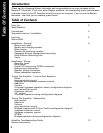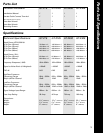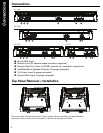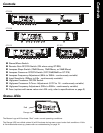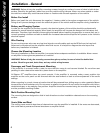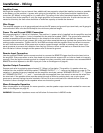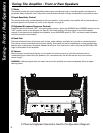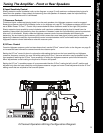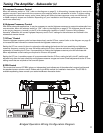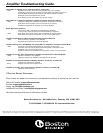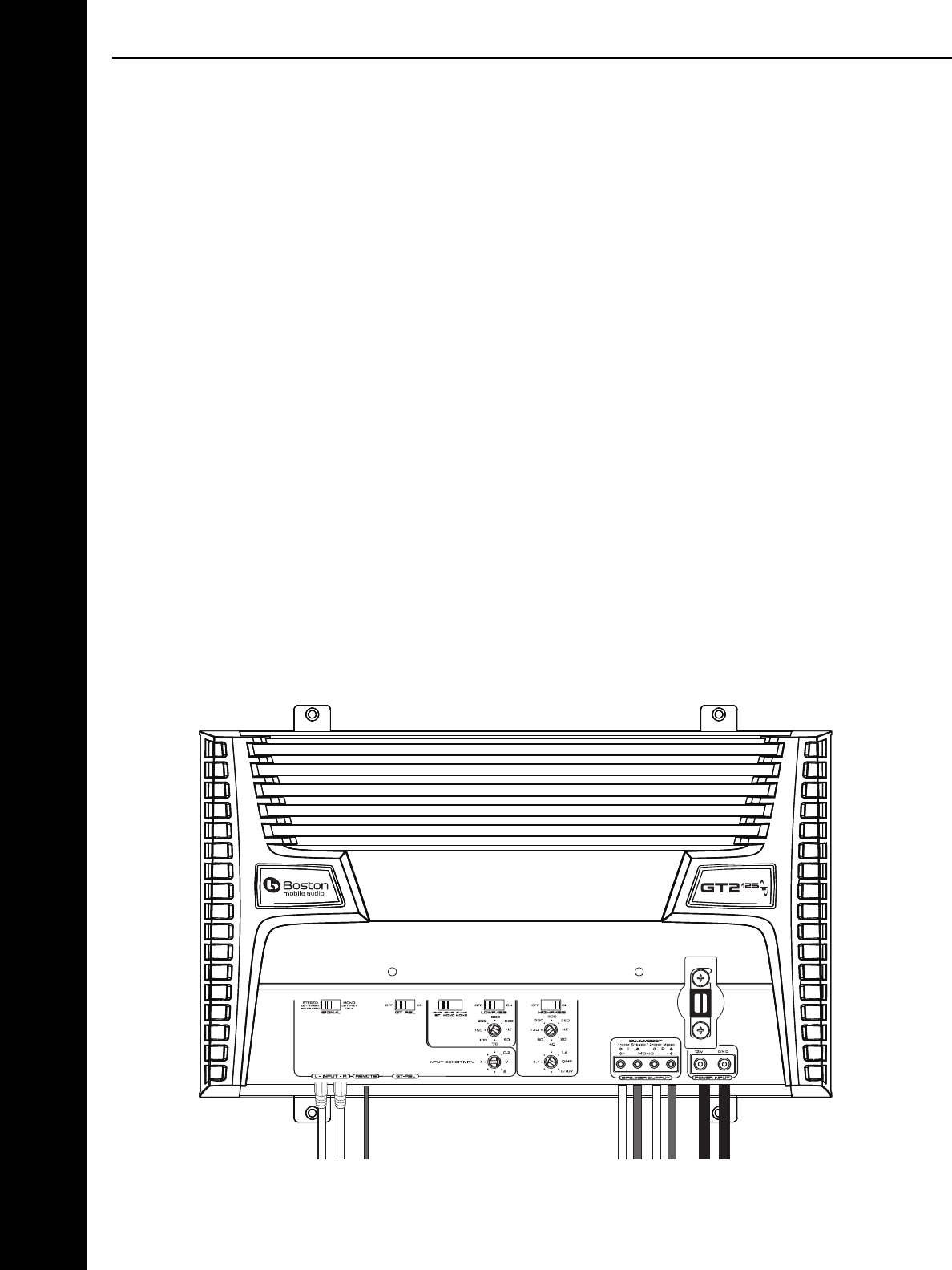
Tuning - Front / Rear Speakers
8
Tuning The Amplifier - Front or Rear Speakers
1) Music
The material chosen for head unit/amplifier system setup must be both clear in recording quality and dynamic in
amplitude. Many audiophile “test” discs have musical tracks with both of these characteristics and should be used.
2) Input Sensitivity Control
Turn control all the way counterclockwise (minimum position). In this position, the amplifier will be less sensitive to
the input signal from the head unit (refer to the diagram on page 5).
3) Highpass & Lowpass Crossover Controls
Crossovers should be turned “OFF” during this phase of setup . Move the HIGHPASS and LOWPASS switches to the
“OFF” position (refer to the diagram on page 5), with these settings, full-range signal is sent to the speaker
outputs. If over-excursion is detected from speakers, move HIGHPASS switch to “ON” and slowly rotate clockwise
until over-excursion is eliminated.
4) Head Unit
The head unit should have all controls such as bass, treble, balance, and fader set to the flat or centered position.
The volume control should be at the minimum setting. If the head unit has any equalization or bass management
features such as boost, they should be defeated at this time. Turn head unit on, and verify that the RED status LED
(logo) is illuminated on the amplifier.
5) Volume
With the chosen musical track playing, turn the head unit volume control up until the maximum level of
undistorted signal is heard from the speakers. (For most head units, this will be near the end of the volume
control range.)
WARNING! A distorted signal from the head unit sent to the amplifier can cause loudspeaker failure at higher
listening levels.
2-Channel Highpass Operation Switch Configuration Diagram




